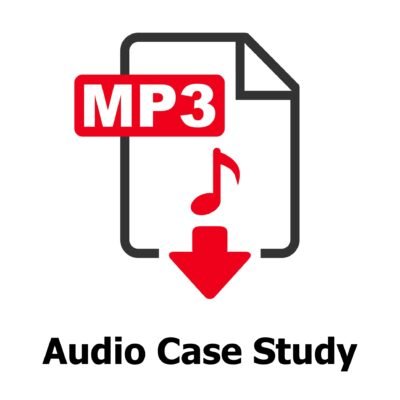Telemedicine refers to the practice of delivering healthcare services remotely, utilising telecommunications technology to facilitate the exchange of medical information between patients and healthcare providers. This innovative approach allows for consultations, diagnoses, and treatment plans to be conducted without the need for physical presence, thereby breaking geographical barriers and enhancing access to medical care. Telemedicine encompasses a wide range of services, including video consultations, remote patient monitoring, and mobile health applications, all designed to improve patient outcomes and streamline healthcare delivery.
The essence of telemedicine lies in its ability to connect patients with healthcare professionals in real-time, regardless of their location. This is particularly beneficial for individuals residing in rural or underserved areas where access to specialised medical care may be limited. By leveraging technology, telemedicine not only facilitates timely medical interventions but also empowers patients to take an active role in managing their health.
As a result, telemedicine has emerged as a vital component of modern healthcare systems, offering a flexible and efficient alternative to traditional in-person visits.
Summary
- Telemedicine is the remote diagnosis and treatment of patients using telecommunications technology.
- Telemedicine has a history dating back to the 1950s, when hospitals used closed-circuit television to provide healthcare services.
- Types of telemedicine include real-time video consultations, remote patient monitoring, and store-and-forward telemedicine.
- Benefits of telemedicine include increased access to healthcare, cost savings, and improved patient outcomes.
- Challenges of telemedicine include data security concerns, regulatory barriers, and the digital divide.
History of Telemedicine
The roots of telemedicine can be traced back to the early 20th century when the first instances of remote medical consultations began to emerge. One notable example is the use of radio technology in the 1920s, which allowed physicians to communicate with ships at sea, providing medical advice to sailors who were unable to access land-based healthcare services. This pioneering effort laid the groundwork for future developments in telemedicine, demonstrating the potential of technology to bridge distances in healthcare delivery.
As technology advanced, so too did the capabilities of telemedicine. The 1960s marked a significant turning point with the establishment of the first telemedicine programmes in the United States. The Massachusetts Institute of Technology (MIT) initiated a project that connected a hospital with a remote clinic via closed-circuit television, enabling specialists to consult on patient cases from afar.
This period also saw the introduction of telepsychiatry, where mental health professionals began using telephone and video conferencing to provide therapy to patients in remote locations. Over the decades, telemedicine continued to evolve, driven by advancements in communication technologies and a growing recognition of its potential benefits.
Types of Telemedicine

Telemedicine can be categorised into several distinct types, each serving different purposes and patient needs. One of the most common forms is synchronous telemedicine, which involves real-time interactions between patients and healthcare providers through video conferencing or phone calls. This type of telemedicine is particularly useful for consultations that require immediate feedback or assessment, such as follow-up appointments or urgent care situations.
Another significant category is asynchronous telemedicine, often referred to as store-and-forward telemedicine. In this model, patients can send their medical information—such as images, test results, or recorded symptoms—to healthcare providers who review the data at a later time. This approach is especially beneficial for dermatology and radiology, where specialists can analyse images without needing the patient to be present at the time of evaluation.
Additionally, remote patient monitoring (RPM) has gained traction as a type of telemedicine that involves the continuous collection of patient data through wearable devices or home monitoring systems. This allows healthcare providers to track patients’ health metrics over time and intervene when necessary.
Benefits of Telemedicine
The advantages of telemedicine are manifold and have become increasingly apparent in recent years. One of the most significant benefits is improved access to healthcare services. For individuals living in rural or remote areas, telemedicine eliminates the need for long journeys to see a specialist, thereby reducing travel costs and time away from work or family responsibilities.
This increased accessibility can lead to earlier diagnoses and timely interventions, ultimately improving health outcomes. Moreover, telemedicine enhances convenience for patients by allowing them to receive care from the comfort of their own homes. This is particularly advantageous for those with mobility issues or chronic conditions that make travel challenging.
Patients can schedule appointments at times that suit them best, reducing waiting times and minimising disruptions to their daily lives. Additionally, telemedicine can lead to cost savings for both patients and healthcare systems by reducing overhead costs associated with in-person visits and hospital stays.
Challenges of Telemedicine
Despite its numerous benefits, telemedicine is not without its challenges. One significant hurdle is the issue of technology access and digital literacy. Not all patients have access to reliable internet connections or the necessary devices to engage in telehealth services.
This digital divide can exacerbate existing health disparities, particularly among older adults or those from lower socioeconomic backgrounds who may struggle with technology. Another challenge lies in regulatory and reimbursement policies surrounding telemedicine. In many regions, there are still inconsistencies in how telehealth services are reimbursed by insurance providers, which can create barriers for both patients and healthcare providers.
Additionally, concerns regarding patient privacy and data security are paramount in telemedicine practices. The transmission of sensitive health information over digital platforms necessitates robust security measures to protect patient confidentiality and comply with regulations such as the General Data Protection Regulation (GDPR) in Europe.
Telemedicine Technology

The technological landscape underpinning telemedicine is diverse and continually evolving. At its core are communication tools such as video conferencing software, secure messaging platforms, and mobile applications that facilitate interactions between patients and healthcare providers. These technologies must be user-friendly and accessible to ensure that patients can easily navigate their healthcare options.
In addition to communication tools, telemedicine relies on various devices for remote patient monitoring. Wearable technologies like smartwatches and fitness trackers can collect vital signs such as heart rate and blood pressure, transmitting this data directly to healthcare providers for ongoing assessment. Furthermore, advancements in artificial intelligence (AI) are beginning to play a role in telemedicine by enabling more accurate diagnostics through data analysis and predictive modelling.
For instance, AI algorithms can assist in interpreting medical images or identifying patterns in patient data that may indicate emerging health issues.
Telemedicine in the UK
In the United Kingdom, telemedicine has gained significant traction over recent years, particularly accelerated by the COVID-19 pandemic. The National Health Service (NHS) has embraced digital health solutions as part of its strategy to enhance service delivery and improve patient access to care. During the pandemic, many GP practices rapidly transitioned to remote consultations via phone or video calls, ensuring continuity of care while adhering to social distancing measures.
The NHS has also launched various initiatives aimed at integrating telemedicine into routine practice. For example, NHS Digital has developed platforms such as NHS App and eConsult that allow patients to book appointments, access medical advice, and manage prescriptions online. These tools not only streamline administrative processes but also empower patients by providing them with greater control over their healthcare journey.
However, challenges remain regarding equitable access to these services across different demographics and regions within the UK.
Future of Telemedicine
Looking ahead, the future of telemedicine appears promising as technological advancements continue to reshape healthcare delivery models. The integration of artificial intelligence and machine learning into telehealth platforms is expected to enhance diagnostic accuracy and personalise treatment plans based on individual patient data. Furthermore, as 5G technology becomes more widespread, it will facilitate faster data transmission and improve the quality of video consultations, making remote care even more effective.
Additionally, there is a growing recognition of the importance of hybrid models that combine in-person visits with telehealth services. This approach allows for a more tailored patient experience while ensuring that those who require hands-on examinations receive appropriate care. As regulatory frameworks evolve to support telehealth practices more comprehensively, it is likely that reimbursement policies will become more standardised across regions.
In conclusion, while challenges remain in terms of access and regulation, the trajectory of telemedicine suggests an increasingly integral role within healthcare systems worldwide. As both patients and providers adapt to this new paradigm, telemedicine has the potential not only to enhance individual health outcomes but also to transform how healthcare is delivered on a global scale.
Telemedicine has revolutionised the way healthcare is delivered, allowing patients to consult with doctors remotely through video calls and other digital platforms. This innovative approach has been particularly beneficial during the COVID-19 pandemic, enabling patients to receive medical advice and treatment without leaving their homes. For more insights on how companies are adapting to digital transformation, check out the case study on Great Mills, which explores how this company embraced technology to enhance its operations.
FAQs
What is Telemedicine?
Telemedicine is the use of technology to provide healthcare services remotely. It allows patients to consult with healthcare professionals through video calls, phone calls, or secure messaging, without the need for an in-person visit.
How does Telemedicine work?
Telemedicine works by connecting patients with healthcare professionals using technology such as video conferencing, secure messaging platforms, and mobile apps. Patients can discuss their symptoms, receive medical advice, and even get prescriptions without physically visiting a doctor’s office.
What are the benefits of Telemedicine?
Some of the benefits of telemedicine include increased access to healthcare, especially for those in remote or rural areas, reduced travel time and costs for patients, and the ability to receive timely medical advice without waiting for an in-person appointment.
Is Telemedicine secure and private?
Telemedicine platforms and services are designed to be secure and private, with measures in place to protect patient confidentiality and comply with data protection regulations. It is important for patients to use reputable telemedicine providers and ensure that their personal information is kept secure.
What types of healthcare services can be provided through Telemedicine?
Telemedicine can be used for a wide range of healthcare services, including primary care consultations, mental health counselling, specialist consultations, follow-up appointments, and prescription refills. It can also be used for remote monitoring of chronic conditions and post-operative care.
 Partnerships with people (PDF)
Partnerships with people (PDF)  Managing workforce requirements (MP3)
Managing workforce requirements (MP3) 